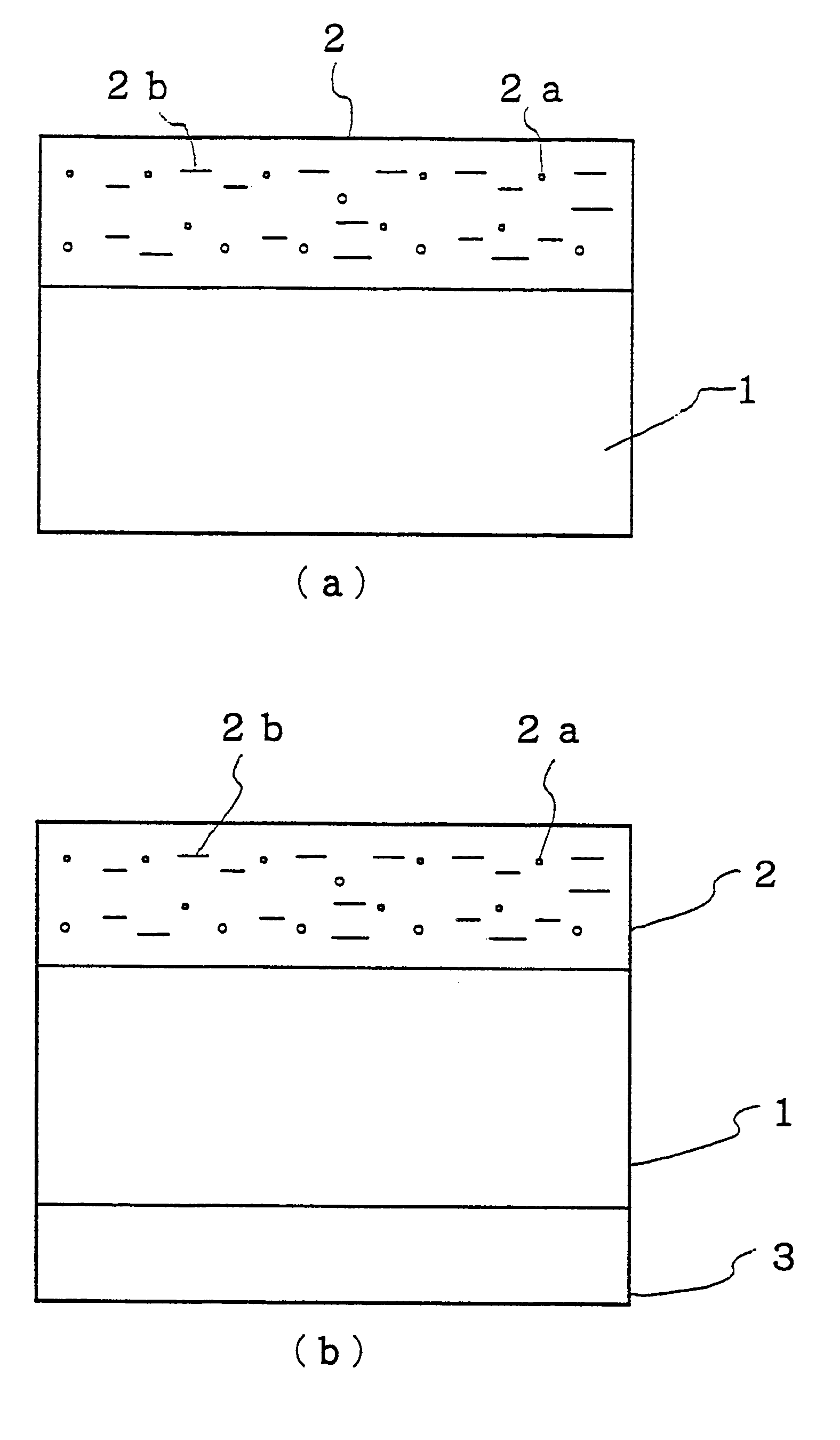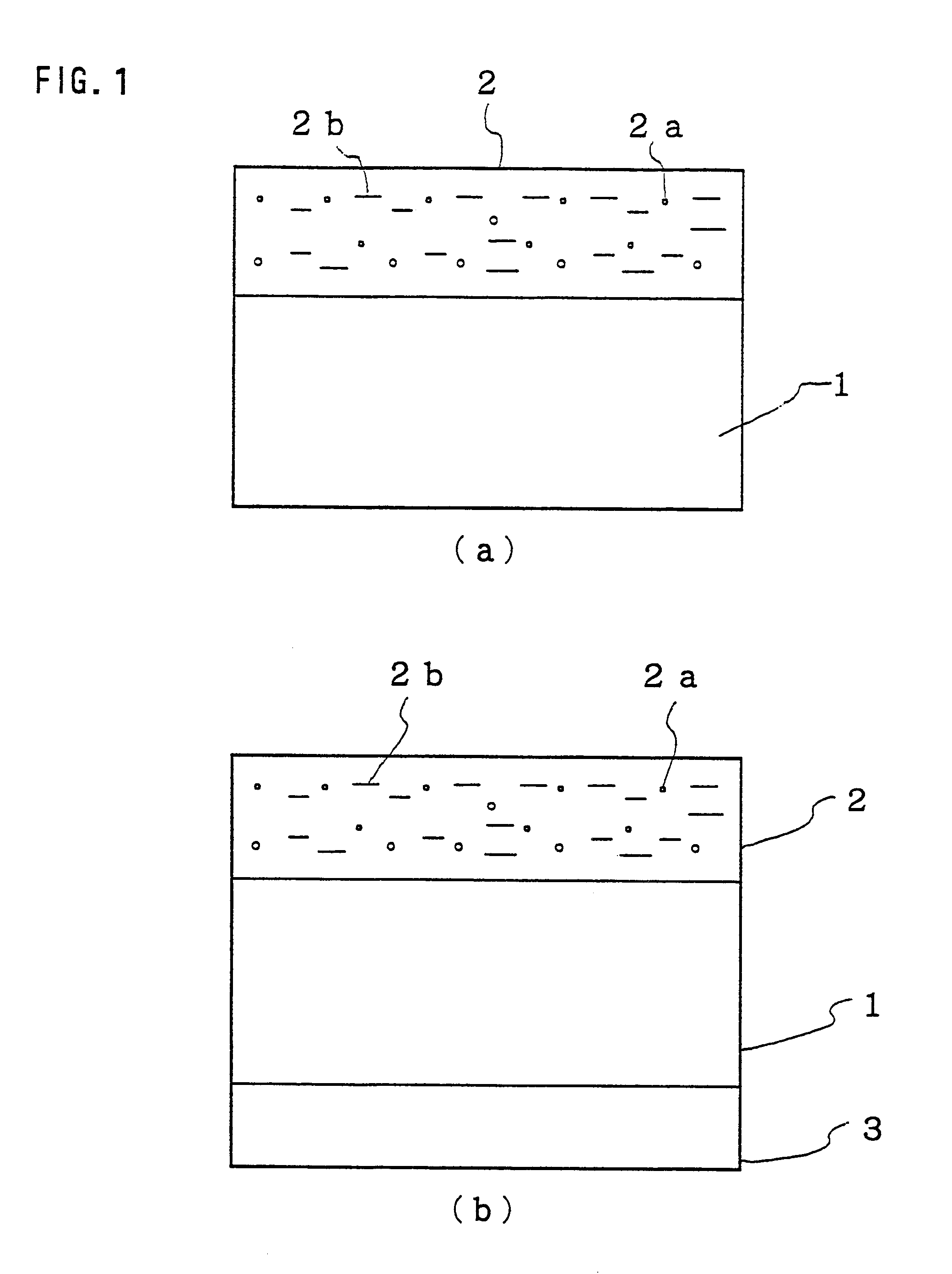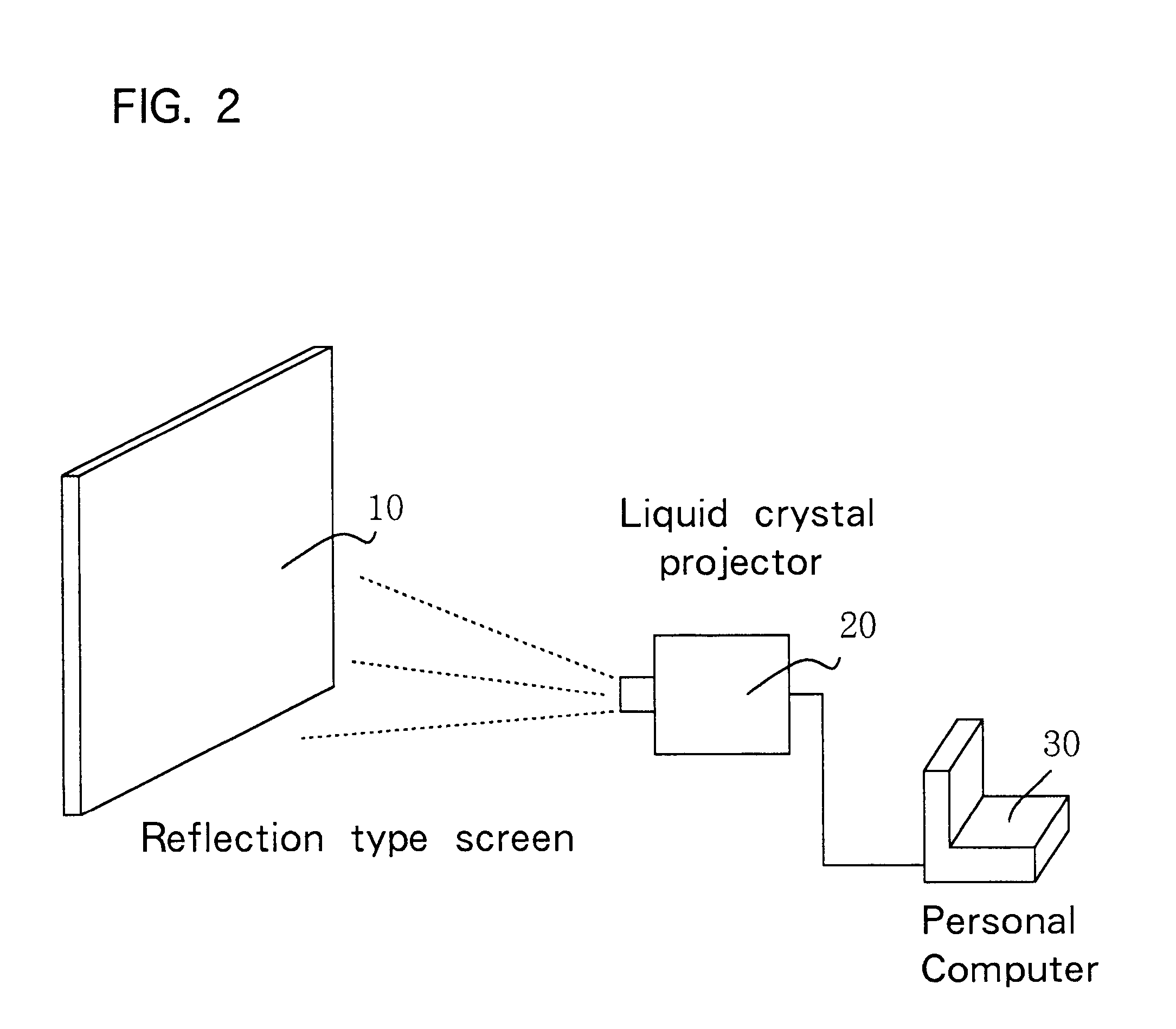Reflection type screen for projectors
a projector and projector technology, applied in the field of projectors, can solve the problems of poor color reproducibility, polarizing screens and glass bead screens, and reduce the adhesion of the light diffusion layer to the substrate, and achieve the effects of improving the view angle, reducing the scratch resistance of the surface of the light diffusion layer, and improving the color reproducibility
- Summary
- Abstract
- Description
- Claims
- Application Information
AI Technical Summary
Benefits of technology
Problems solved by technology
Method used
Image
Examples
example 1
A coating solution for the light diffusion layer having the following composition was applied to one side of a polyester film having a thickness of 100 .mu.m (LUMIRROR E20: Toray Industries Inc.) using a bar-coater and dried to form a light diffusion layer. Thus, a reflection type screen was obtained.
The SG value and view angle of this screen were measured. The SG value was obtained from luminance of the screen surface and illuminance of the light source using the equation SG=(B / E).times..pi. (where B represents luminance of the screen surface (cd / m.sup.2 =nit) and E represents illuminance (lm / m.sup.2 =lux)). The view angle was obtained by measuring luminance of the screen every 10.degree. of screen surface angle relative to a fixed luminance meter while varying the angle from 0.degree.-50.degree., and by finding the angle (half value angle) where the luminance was 50 based on the luminance at the front (0.degree.) defined as 100.
In addition, the color temperature was measured as an...
examples 2-6
Comparative Example 1
Reflection type screens were produced in the same manner as that of Example 1 except that the content of the pearl pigment was changed as shown in Table 1. SG value, half value angle and color temperature were measured for these reflection type screens in the same manner as that of Example 1. The results are also shown in Table 1.
example 7
A reflection type screen was produced in the same manner as that of Example 1 except that silicone resin beads (Tospearl130: GE Toshiba Silicones Co., Ltd.) were used as the light diffusion agent instead of styrene beads. SG value, half value angle and color temperature were measured for this reflection type screen in the same manner as that of Example 1. The results are also shown in Table 1.
PUM
 Login to View More
Login to View More Abstract
Description
Claims
Application Information
 Login to View More
Login to View More - R&D
- Intellectual Property
- Life Sciences
- Materials
- Tech Scout
- Unparalleled Data Quality
- Higher Quality Content
- 60% Fewer Hallucinations
Browse by: Latest US Patents, China's latest patents, Technical Efficacy Thesaurus, Application Domain, Technology Topic, Popular Technical Reports.
© 2025 PatSnap. All rights reserved.Legal|Privacy policy|Modern Slavery Act Transparency Statement|Sitemap|About US| Contact US: help@patsnap.com



